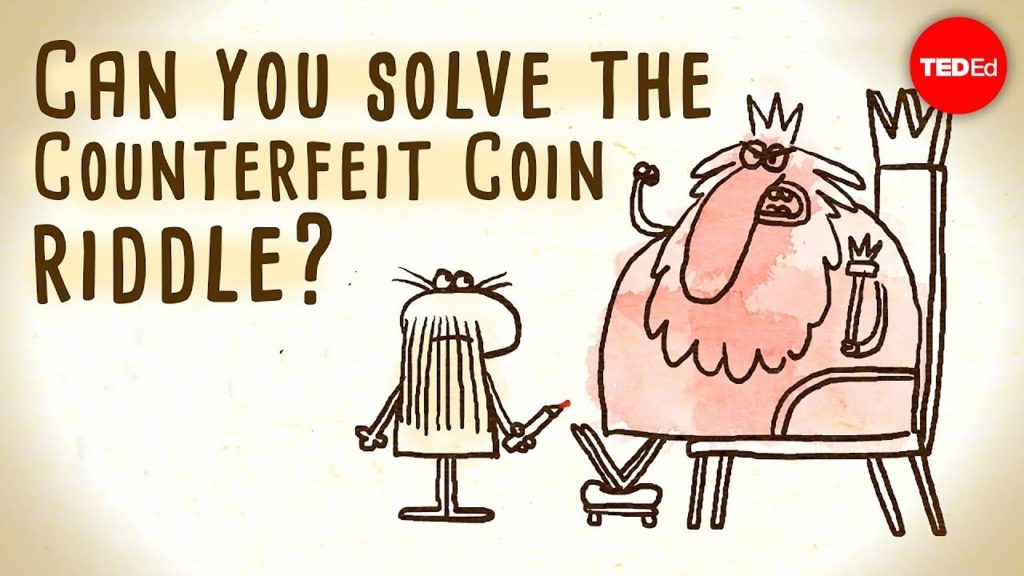Can you solve the counterfeit coin riddle?

You’re the realm’s greatest mathematician, but ever since you criticized the Emperor’s tax laws, you’ve been locked in the dungeon with only a marker to count the days. But one day, you’re suddenly brought before the Emperor who looks even angrier than usual. One of his twelve governors has been convicted of paying his taxes with a counterfeit coin which has already made its way into the treasury. As the kingdom’s greatest mathematician, you’ve been granted a chance to earn your freedom by identifying the fake. Before you are the twelve identical looking coins and a balance scale.
You know that the false coin will be very slightly lighter or heavier than the rest. But the Emperor’s not a patient man. You may only use the scale three times before you’ll be thrown back into the dungeon. You look around for anything else you can use, but there’s nothing in the room – just the coins, the scale, and your trusty marker. How do you identify the counterfeit? Pause here if you want to figure it out for yourself! Answer in: 3 Answer in: 2 Answer in: 1 Obviously you can’t weigh each coin against all of the others, so you’ll have to weigh several coins at the same time by splitting the stack into multiple piles then narrowing down where the false coin is. Start by dividing the twelve coins into three equal piles of four.
Placing two of these on the scale gives us two possible outcomes. If the two sides balance, all eight coins on the scale are real, and the fake must be among the remaining four. So how do you keep track of these results? That’s where the marker comes in. Mark the eight authentic coins with a zero. Now, take three of them and weigh them against three unmarked coins. If they balance, the remaining unmarked coin must be the fake. If they don’t, draw a plus on the three unmarked coins if they’re heavier or a minus if they’re lighter.
Now, take two of the newly marked coins and weigh them against each other. If they balance, the third coin is fake. Otherwise, look at their marks. If they are plus coins, the heavier one is the imposter. If they are marked with minus, it’s the lighter one. But what if the first two piles you weigh don’t balance? Mark the coins on the heavier side with a plus and those on the lighter side with a minus. You can also mark the remaining four coins with zeros since you know the fake one is already somewhere on the scale. Now, you’ll need to think strategically so you can remove all remaining ambiguity in just two more weighings.
To do this, you’ll need to reassemble the piles. One method is to replace three of the plus coins with three of the minus coins, and replace those with three of the zero coins. >From here, you have three possibilities. If the previously heavier side of the scale is still heavier, that means either the remaining plus coin on that side is actually the heavier one, or the remaining minus coin on the lighter side is actually the lighter one.
Choose either one of them, and weigh it against one of the regular coins to see which is true. If the previously heavier side became lighter, that means one of the three minus coins you moved is actually the lighter one. Weigh two of them against each other. If they balance, the third is counterfeit. If not, the lighter one is. Similarly, if the two sides balanced after your substitution, then one of the three plus coins you removed must be the heavier one. Weigh two of them against each other. If they balance, the third one is fake. If not, then it’s the heavier one. The Emperor nods approvingly at your finding, and the counterfeiting Lord takes your place in the dungeon.
Read More






Responses